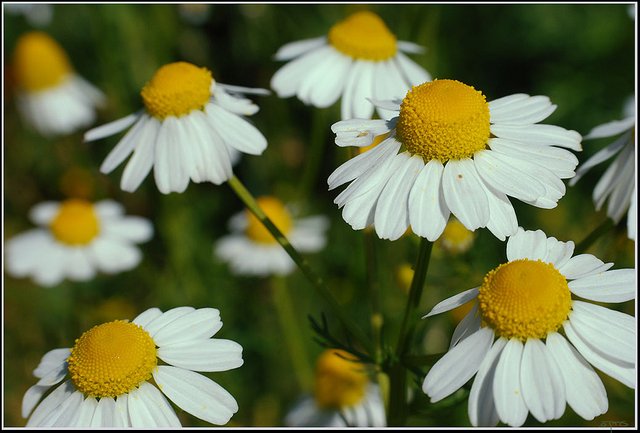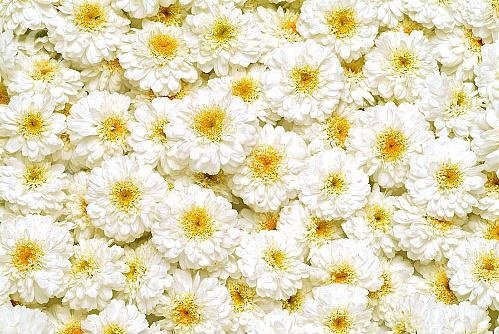Chamomile - Always a Top Choice For Overall Well-Being
Chamomile is a flower that looks like a days. It is a member of the Asteraceae or Compositae family and is actually a very potent herb. There are two very well known chamomile plants in the world:
German chamomile (Matricaria recutita)

Image source: www.flickr.comRoman chamomile (Chamaemelum nobile)

Image source: www.pinterest.com
German chamomile is developed close the ground and in the wild. However, it can also be found in herb gardens. This plant grows up to 3 feet tall, is native to Europe, North Africa and some parts of Asia.
In contrast, the Roman chamomile has flatter leaves and is thicker. The flowers sit atop hairy stems. Roman chamomile is generally found in Western Europe going northward all the way to Northern Ireland.
Benefits of Chamomile:
- Helps calm down nerves, promotes general relaxation and relieves stress and insomnia.
- Combats allergies and eye inflammation and infections.
- Alleviates muscle spasms and menstrual cramps.
- Relieves nausea, heartburn and stress-induced flatulence.
- Eases stomach ailments, gastritis, ulcerative colitis, diverticular disease, Crohn's disease and irritable bowel syndrome.
Common uses for Chamomile:
- Abscesses
- Anxiety
- Insomnia
- Diarrhea or gas
- Inflammatory bowel disease or ulcerative colitis
- Gum inflammation or gingivitis
- Chest colds
- Minor first degree burns
- Sore throats
- Acne, psoriasis and eczema
- Stomach ulcers and cramps
- Teething problems in children, colic, diaper rash and chickenpox (topical mainly)
Chamomile can also be purchased in a oil form if drinking tea is not your thing.
Some risky side effects of chamomile (although very uncommon):
- Trigger vomiting and allergic reactions such as difficulty breathing, closing of the throat or swelling of the lips, tongue and face.
- If you take warfarin (Coumadin) or another blood thinner, you should avoid chamomile or make sure you talk to your doctor first.
- If you are allergic to raweed, aster, marigolds, chrysanthemums or celery, as well as other members of the daisy family (arnica, artemisia, feverfew, tansy and yarrow).